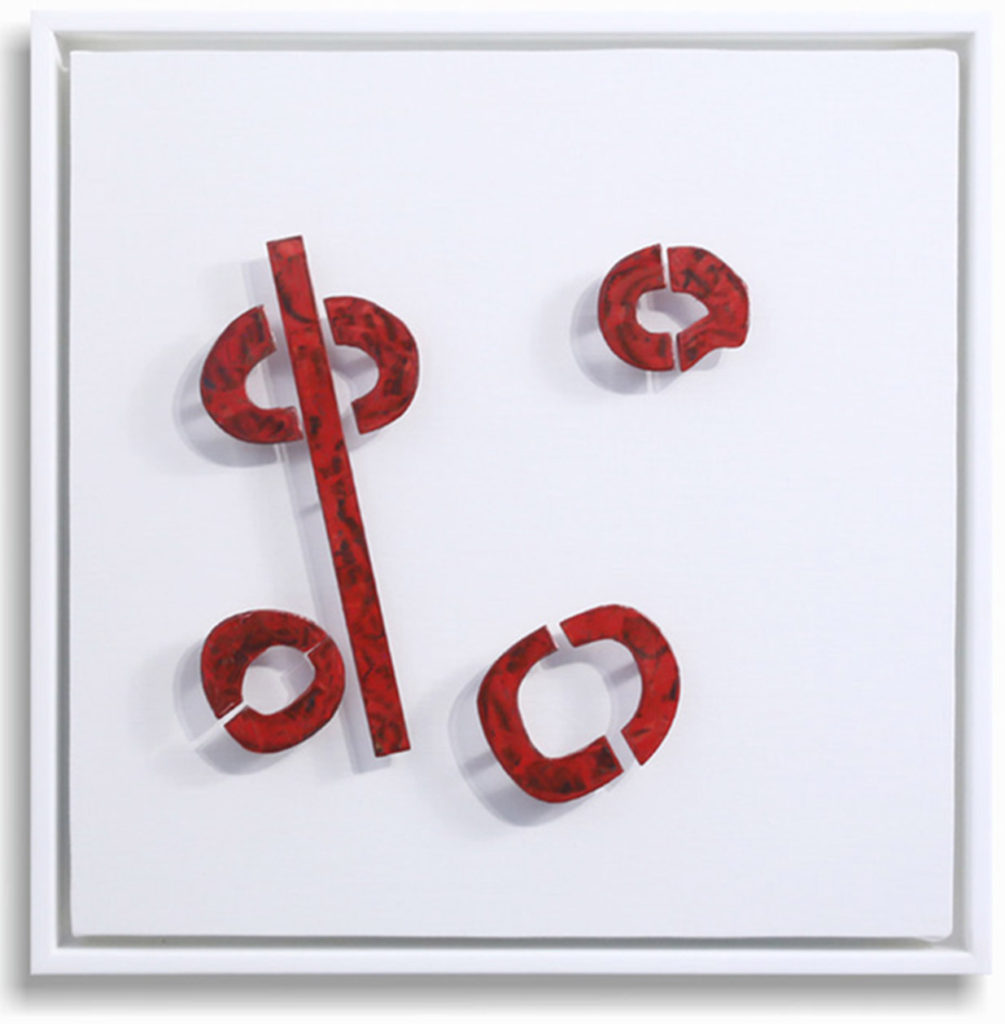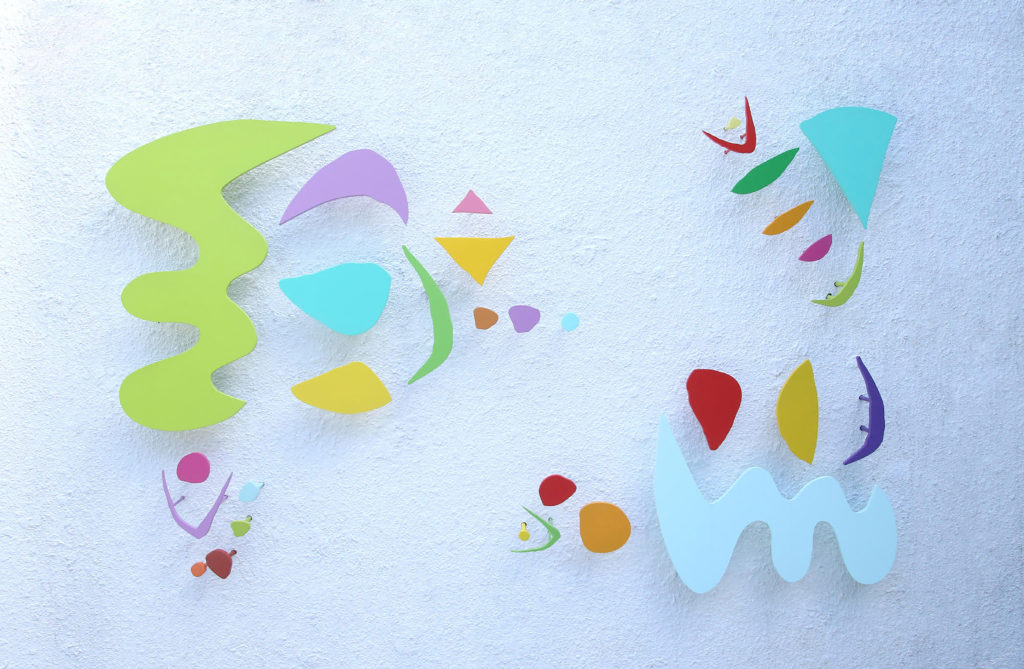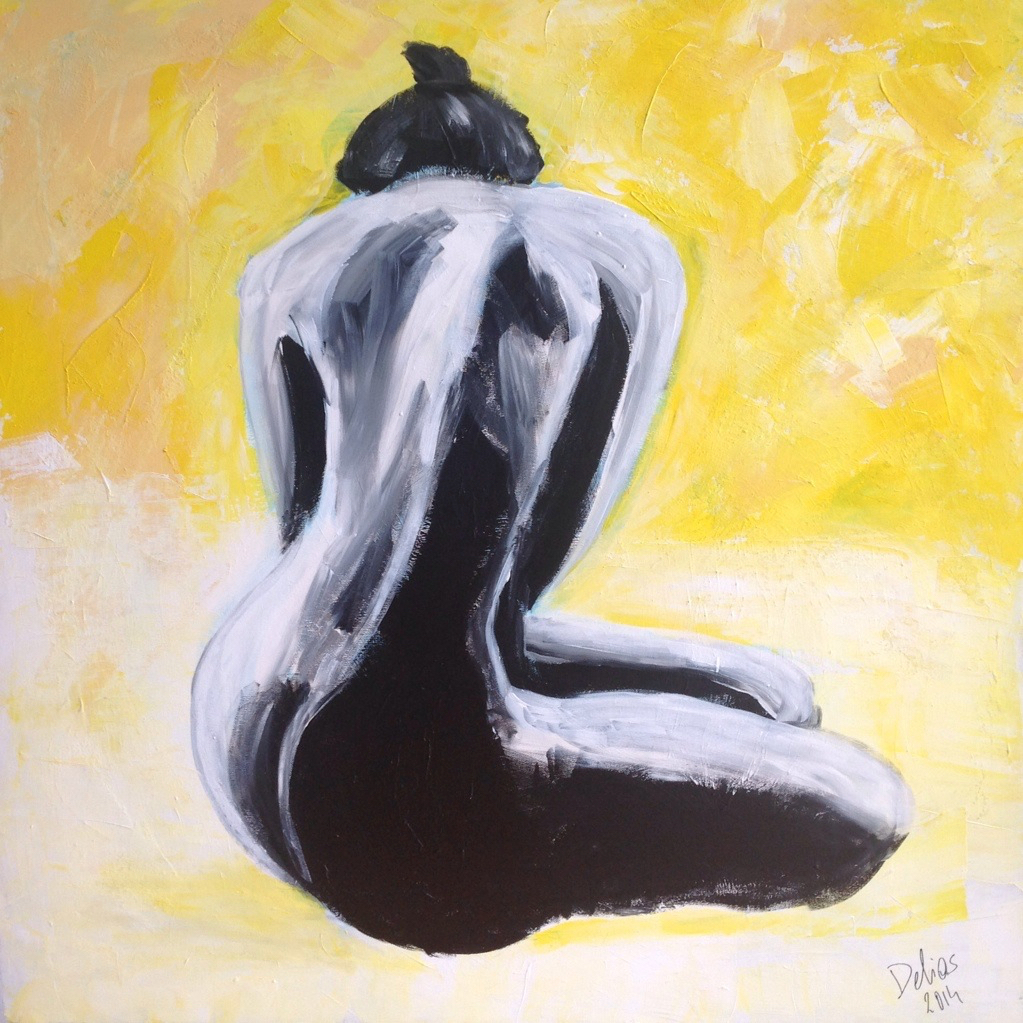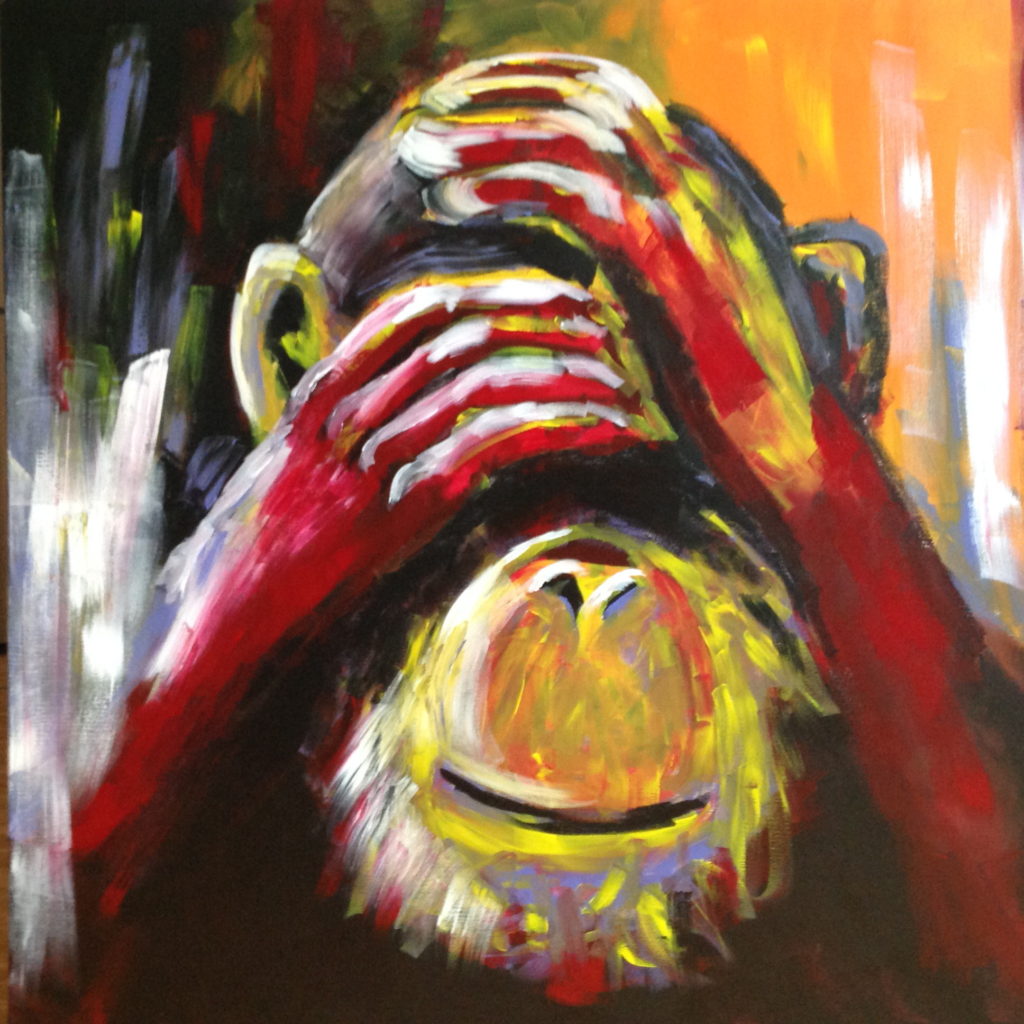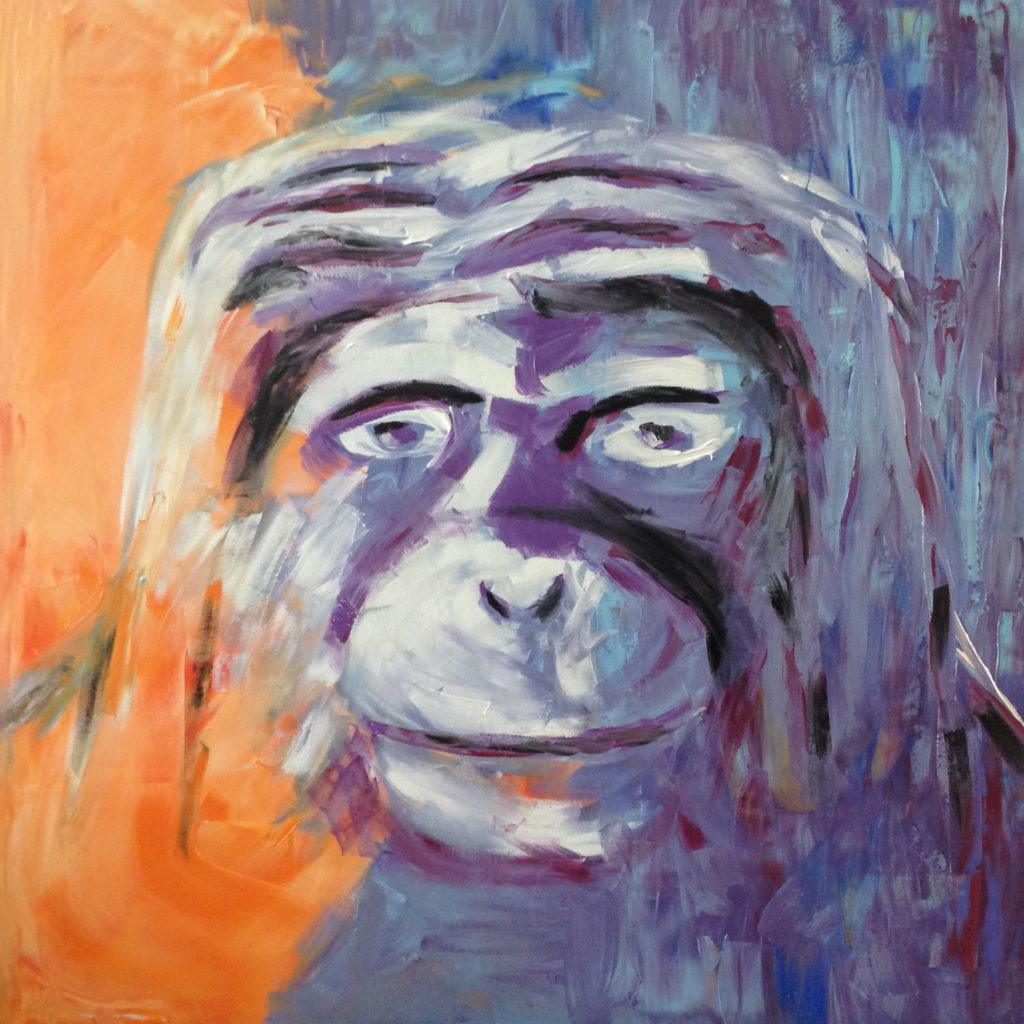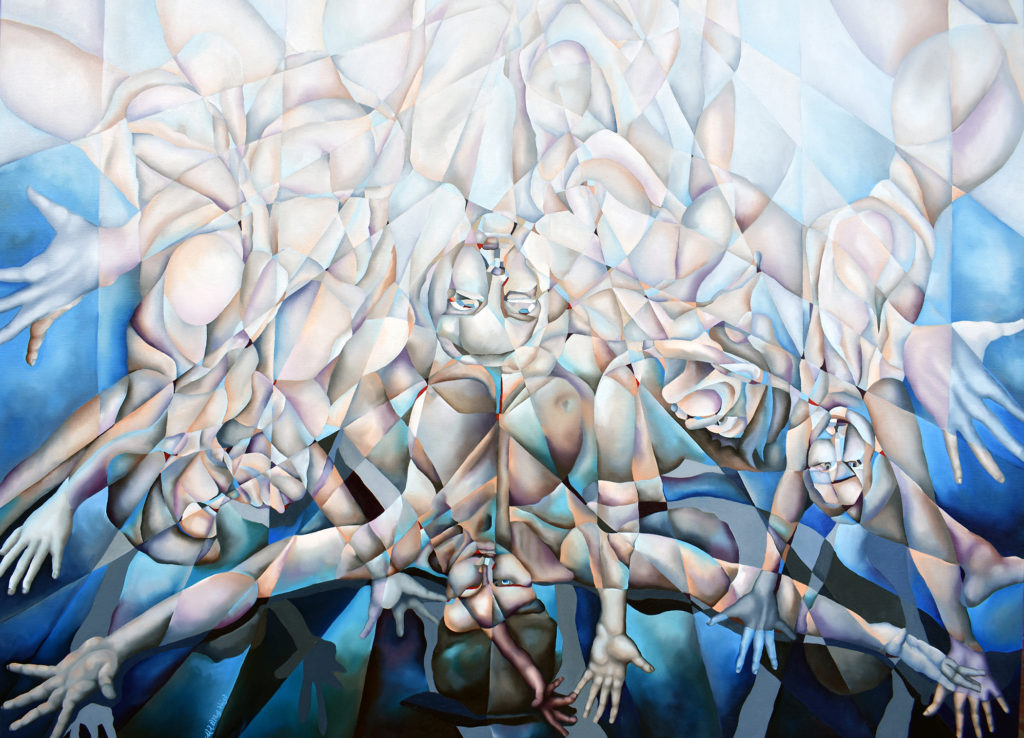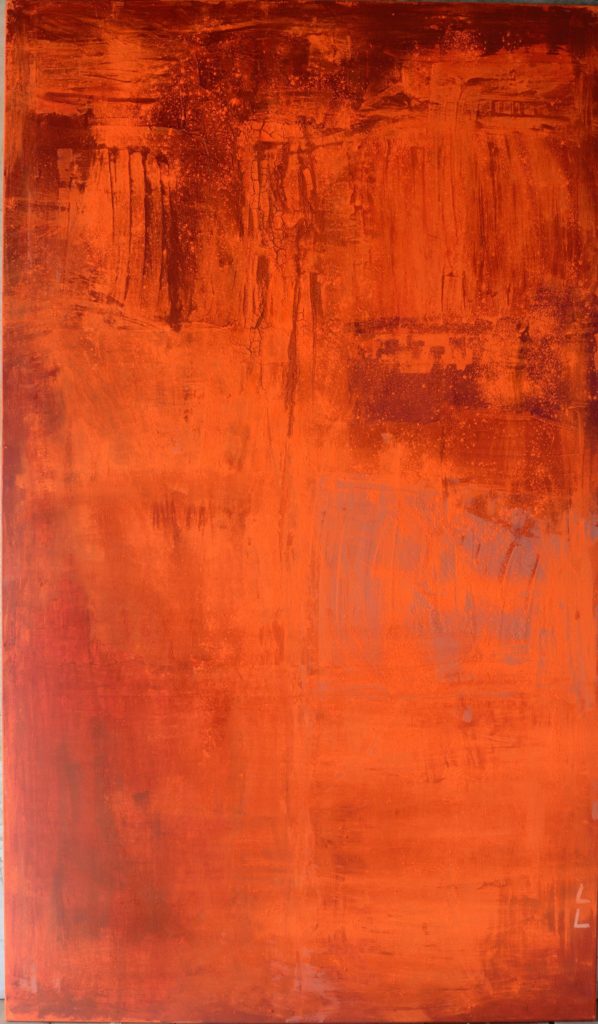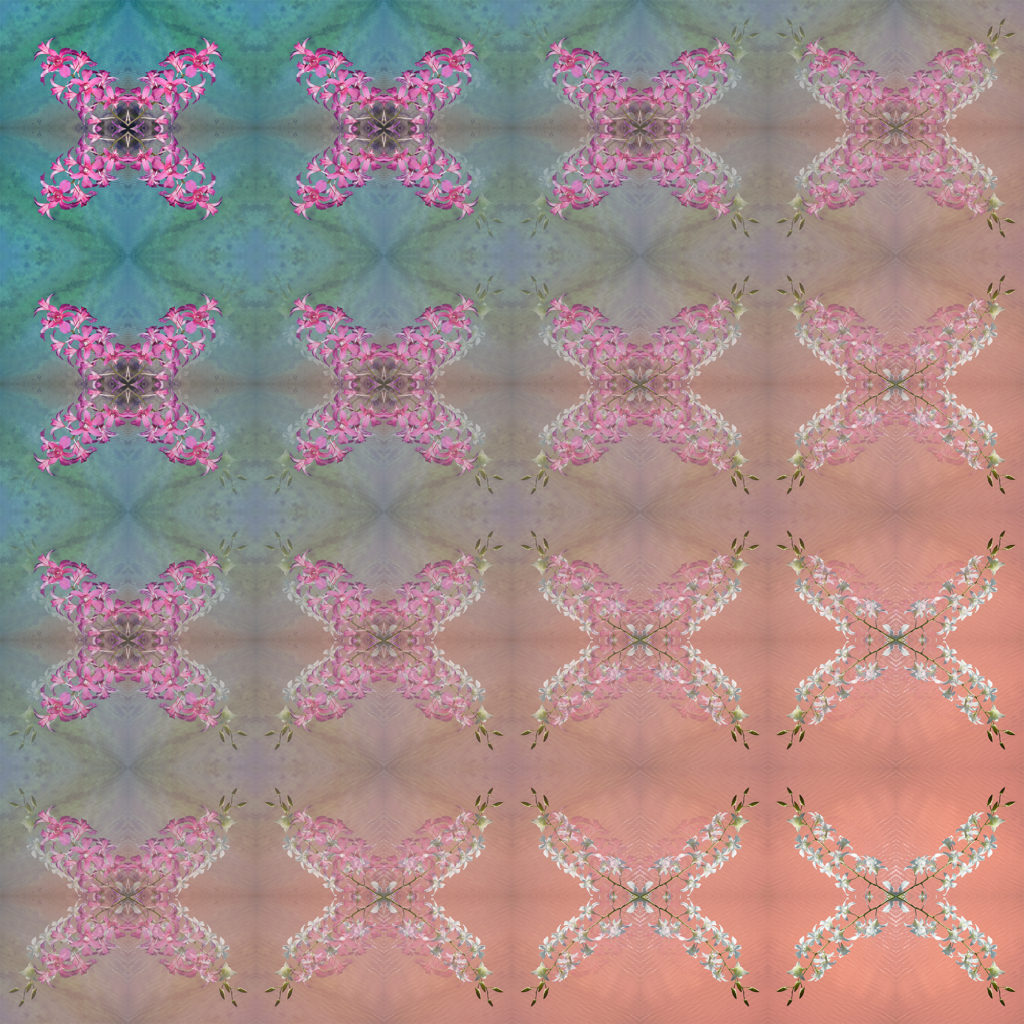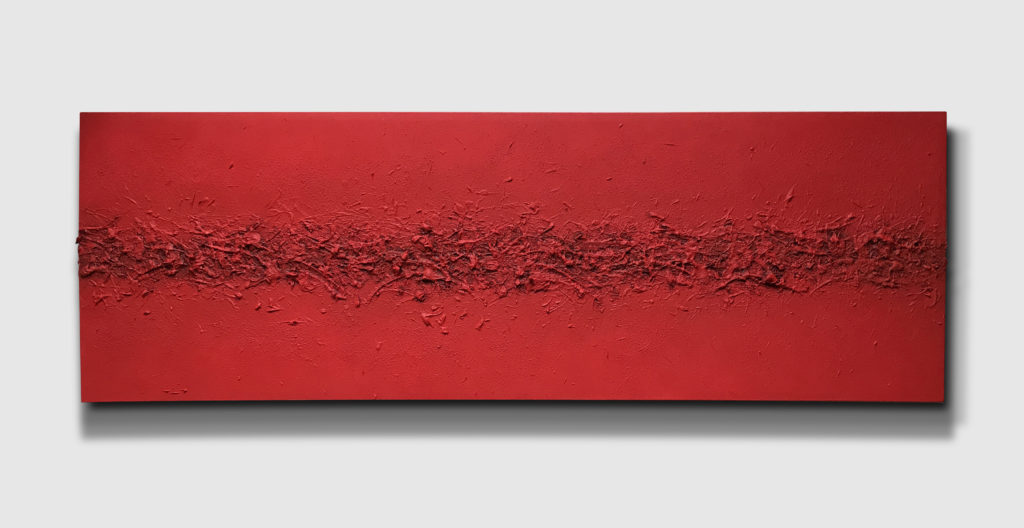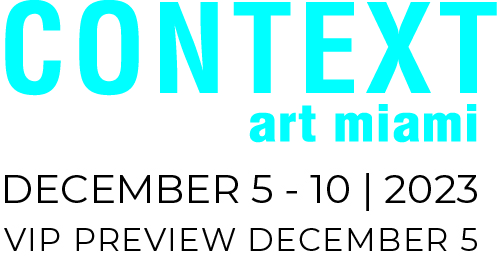Contemporary Art Projects USA/Gallery will present a curated exhibition by our chief curator, Mariavelia Savino during ART Santa Fe 2017 at the Prime Fair Location, Booth #205; as the fair celebrates its seventeenth successful year this summer July 13-16, 2017, when galleries from around the world will once again offer an outstanding overview of modern and contemporary art.
As per the curator, five words define this year’s Contemporary Art Projects USA booth: Diversity, Mastership, Communication, Actuality, and Uniqueness.
The fifteen artists presented are from Santa Fe itself and from other US cities, as well as from Latin America, Europe, Asia and the Middle East. From very figurative to abstract, as well as Geometric and Kinetic. Their artworks represent all media from metal or Plexiglas sculptures to photography, unique mixed media, painting, nd tridimensional collages. In our booth, we made real the term “Fusion“, which is the leading motive of this Art Fair, assembling together the meanings of fashion, technique, the world and at the same time highlighting the unique creative message of each artist, everyone so different from the other, but forming a whole to celebrate their talent: humanity, beauty, nature and life.
Participants Artists are:
Zammy Migdal | Israel | USA| Guest Artist
Zammy Migdal, Guest Artist at Contemporary Projects USA booth in Art Santa Fe tells: “In my work, energy flows to form clarity and purpose. While water and words are easy to pour, impossible to recover, I shape metal into form, but it is the emptiness inside the forms that holds the shadows. I create sculptures that transform spaces and walls into shapes, colors and shadows. Each piece is strong, clean, often undulating, other times straight clean lines. Energy flows in my work to form clarity and purpose. I use the language of abstraction, dynamic shapes and distinctive colors to transmit through art the essence of movement. Often lyrical and poetic artworks flow, move like dancers.
It is my intention to re- invent, over and over, the perception of volumes, of empty spaces, the harmonies of color and the effects produced by the shadows within my sculptures. I use the strongest materials to delicately depict equilibrium, stress, torsion, swings or the act of stretching, influenced by my interest and active support of contemporary dance. Composition, balance and elegance are fundamental qualities in my work.
My series Levitation originated in my interest in suspending objects against gravity. Levitation, from the Latin ‘levitas’ or lightness, is the process by which an object is suspended in space. The illusion of levitation is created by the relationship among metal foregrounds, attaching pins, spaces, light, and shadows. The work is inspired by colors, experiences, and imagination, as much as by the spaces and the meaning of places for which they were created. My work portrays continuity and discontinuity: continuity reflected in the repeating qualities of the forms, while discontinuity reflects the variability shaped by my momentary experience. No two elements are ever the same. Slowly the ingredients, metal and movement, pins and paint, imagination, lights, and shadows, come together to create a splash of color bigger than the sum of its parts. I express myself in metal, mostly steel and aluminum. In Levitation’s twisted metal elements, I place one end of the metal in a vise, sliding the other end through a slit in the lower end of a “T” shaped primitive instrument that I built. I achieve the form of each element using the power of my full body on the upper arms of the “T”, pushing and pulling against the inner strength of the metal. Mostly my strength overcomes the inner tension of the metal. Occasionally the strength of the metal wins in this game of arm wrestling, creating unexpected ripples of the element that speaks to the quality of the medium. Often my patterns are soft, contrasting the hardness of the metals; pleasing and agreeable to the senses they soothe their surroundings. This softness raises doubt about the hardness of the metal. Organic finishes, while exposing the true nature of the metal, create delicate silk-like ribbons. The journey of a thousand miles must begin with a single stop. My journey started 10 years ago in an art class in Lincoln Road, mid-life, in the spring of my metal journey. When we wade into the river, it is never the same river twice. Each element is unique as it emerges with raw force. As I stop to count my blessings and share them with you, I look forward to much more. My work is found in private collections throughout the world and Art in Public Places.”
Special Exhibition | Art Lab I | Translation Series | Curated by Mariavelia Savino | Chief Curator | Contemporary Art Projects USA |located at Art Talk Area thru the Art Santa Fe Fair
An Ideogram is a written character symbolizing the idea of a thing without indicating the sounds used to say it, such as happens with Chinese characters. The word Ideogram comes from combining the Greek words “Idea” and “graphos”: to write. Some Ideograms are understandable by prior convention and others from the pictorial resemblance to a physical object. These last ones are also called pictograms. Zammy Migdal creates his unique series of artworks entitled TRANSLATION following the path of many western innovators that envisioned to design a universal written language, such as the British philosopher and author John Wilkins (1614-1572), one of the founders of the Royal Society and the head of a college in both, Oxford and Cambridge Universities. Later, the Austro Hungarian Jew, Charles K. Bliss (1897-1985) will propose the Blissymbols. Writing systems were preceded by photo-writing that used Ideograms or Pictograms, and other similar methods dating back to the beginning of the Bronze Age, Neolithic Era, in the late 4th Millennium BC that recorded human history. The Hebrew alphabet, parent with the Egyptian hieroglyphics, derived from the Aramaic (CE 135 to present), has twenty-two letters, which are more complex to use and to read than the Western alphabets.
A mayor conclusion to this presentation is that artist Zammy Migdal has created in the TRANSLATION Series of murals a significant set of artworks composed by a “fusion” of the diverse symbols and alphabets adopted through the history of humanity. He wants to show human beings and more over to state that we can all understand each other, especially if we have a positive attitude. At the same time Zammy uses in his artistic pieces bright solid colors that insinuate the high level reached by his creative thinking, as well as the luminosity and colorful depiction of his today homeland in South Florida, his provenance from Israel, and his present ties with Cuba, which all together also mean a strong link with the Caribbean Cultures, either African or Native. by Mariavelia Savino, Chief Curator of Contemporary Art Projects USA
Kelly Fischer | USA | Switzerland | International Guest Artist
Kelly Fischer, International Guest Artist, is a Switzerland-based/American artist born in Memphis, Tennessee, who now lives in Bern. She studied Education / Sociology at the University of Memphis, as well as Early Childhood Special Education, English as a Second Language and a Masters of Painting and Drawing at the Academy of Art University, San Francisco. Kelly always creates vibrant multicolored and powerful artworks. The artist says: “The colors that one chooses as an artist, are an unveiling of our creative personality. My intention is to provoke and present evocative artworks that leave an imprint on the soul… Color forces us to see things differently and does have an impact on the viewer… Shades of gray help to grasp and pay attention to line, shadow, and texture. But, the most significant feature is the strength in the piece itself… I developed a passion for painting and storytelling at the young age… Over time painting challenged me in a way that nothing else ever had. I get a lot of satisfaction out of creating whatever I want…no rules or boundaries.
Writing and painting are different yet the same. My dream is to reach a larger audience. The support received in both Europe and the States is influential in helping me to forge my career.” Kelly Fischer, a trained Montessori teacher, the founder and former Headmistress of The English Montessori School of Bern, Switzerland, is an Award-Winning Author with the book The Most Beautiful Color of All. This year we awarded artist Kelly Fischer as the International Guest Artist at Contemporary Art Projects USA Booth in Art Santa Fe, where she will present her unique and exquisite large sized artworks St. Bernard Pass I and II. Recently Kelly exhibited with outstanding success in Bern, Switzerland, in London, UK, and in Venice, Italy. Also, she was commissioned for a Solo Show at Villa Paradise, in Eze, France, as well as she was invited to present her exhibition The Most Beautiful Color of All at the Germantown Performing Arts Center Grand Lobby Gallery in Tennessee, opening in September 2017.
Special Exhibition | Art Lab II | Presentation Sponsored by Santa Fe Children’s Museum and Contemporary Art Projects USA | Curated by Mariavelia Savino | Art Talk Area
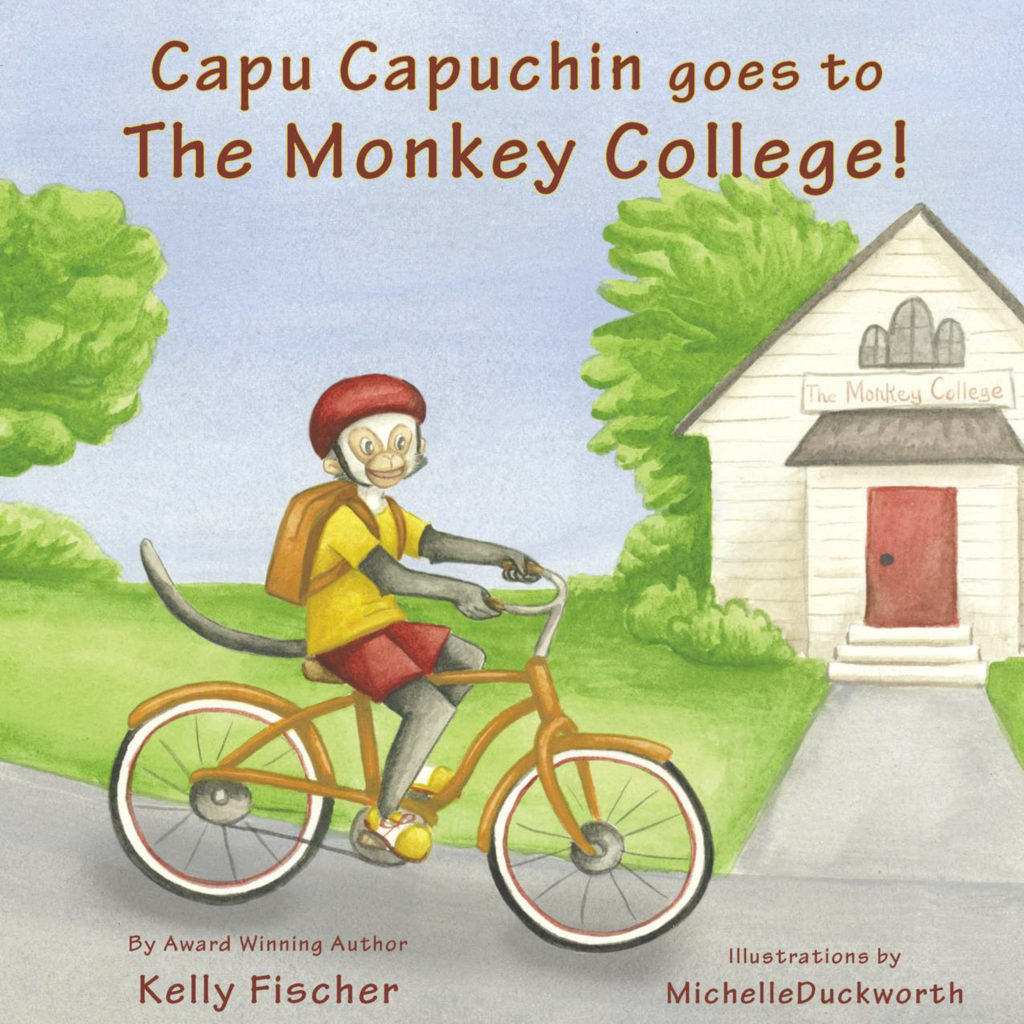 Readings
Readings
Friday, July 14: 3 p.m.
Saturday, July 15: 1 p.m. | 3 p.m.
Sunday, July 16: 1 p.m.
Internationally renowned contemporary artist and book author Kelly Fischer returns to Art Santa Fe with her newest children’s book, Capu Capuchin Goes to Monkey College. It’s a charming, beautifully illustrated story that reminds us all about the importance of safety during summer activities and throughout the year. Based in Switzerland, Fischer—a mesmerizing visual artist, compelling author, mother, and early childhood expert—has received global acclaim and incredible success at major art shows and events, where she has painted live and interacted with children during coordinated special projects. Her work is part of private collections in the United States and abroad. Children and their parents who attend Fischer’s special readings of her new book will receive a signed copy to take home.
Brian Blount| USA | Local Invited Artist
Brian Blount, born in 1950, Tick Bite, NC, currently resides in Santa Fe, NM. During 1970-73, he studied at the University of North Carolina, Chapel Hill, NC; Penland School of Crafts, Penland, NC; and Haystack School of Crafts, Deer Isle, ME. In the 1970’s, a significant number of young artists moved to Santa Fe, NC, and Brian Blount was one of them. Blount achieved a nationwide outstanding prestige and success in his career, becoming a leading member of the artistic community in the area. His studio became an artists’ gathering place. To create one of a kind unique and exquisite artworks of diverse size, developed on mixed media collage, the artist uses books, maps, antique objects, his own paintings, as well as three-dimensional objects made by himself. From the 1980’s, his collages dominated the art scene depicting unique images of suggested landscape forms that captured the attention of the international art world. The artist affirms about his Art: “My work is a narrative of torn, touched, used, loved, discarded and forgotten fragments of art, ephemera and objects; a mystery of moments, almost remembered.” Selected Exhibitions: Concept Art Fair, during Art Basel Miami Week 2016; Corning Museum of Art, Corning, NY, 2009-2011; Goldleaf Gallery, Santa Fe, NM, 2009; Cast Glass & Bronze Sculpture, Lyons Matrix Gallery, Austin, TX, 1996; In 1995: Robert McClain & C ., Houston, TX, Susan Duval Gallery, Aspen, CO, and SOFA Chicago, IL; In 1994: Glass Invitational, Judy Youens Gallery, Houston, TX, Shelter, Elaine Horwitch Gallery, Scottsdale, AZ, and Mill Street Gallery, Aspen, CO; In 1987: New Mexico 87, Museum of Fine Arts, Santa Fe, NM, and Modem Masks, Elaine Horwitch Galleries, Scottsdale, AZ. Selected Public Collections: Albuquerque Museum of Fine Arts, Albuquerque, NM; Amoco Production Company, Houston, TX and Denver, CO; Arizona State University, Tempe, AZ; Columbia University, New York, NY; Corning Museum of Art, Corning NY; Gannett Corporation, Washington, DC; Guinness Corporation, New Haven, CT; LTV Corporation, Dallas, TX; McDonalds Corporation, Chicago, IL; Mountain Bell, Denver, CO; Santa Fe Museum of Fine Arts, Santa Fe, NM; Old Jail Museum, Albany, TX; Pitts Petroleum Company, Dallas, TX and the Scottsdale Center for the Arts, Scottsdale, AZ.
Selected Exhibitions: Concept Art Fair, during Art Basel Miami Week 2016; Corning Museum of Art, Corning, NY, 2009-2011; Goldleaf Gallery, Santa Fe, NM, 2009; Cast Glass & Bronze Sculpture, Lyons Matrix Gallery, Austin, TX, 1996; In 1995: Robert McClain & C ., Houston, TX, Susan Duval Gallery, Aspen, CO, and SOFA Chicago, IL; In 1994: Glass Invitational, Judy Youens Gallery, Houston, TX, Shelter, Elaine Horwitch Gallery, Scottsdale, AZ, and Mill Street Gallery, Aspen, CO; In 1987: New Mexico 87, Museum of Fine Arts, Santa Fe, NM, and Modem Masks, Elaine Horwitch Galleries, Scottsdale, AZ. Selected Public Collections: Albuquerque Museum of Fine Arts, Albuquerque, NM; Amoco Production Company, Houston, TX and Denver, CO; Arizona State University, Tempe, AZ; Columbia University, New York, NY; Corning Museum of Art, Corning NY; Gannett Corporation, Washington, DC; Guinness Corporation, New Haven, CT; LTV Corporation, Dallas, TX; McDonalds Corporation, Chicago, IL; Mountain Bell, Denver, CO; Santa Fe Museum of Fine Arts, Santa Fe, NM; Old Jail Museum, Albany, TX; Pitts Petroleum Company, Dallas, TX and the Scottsdale Center for the Arts, Scottsdale, AZ.
Chris Delias | Austria | European Invited Artist
Chris Delias, European Invited Artist at Contemporary Art Projects USA booth in Art Santa Fe, depicts issues of our society and fashion industry. Cell-phones as cameras taking selfies to post in Social Media pages to be seen through cellphones or personal computers; branding of the posers’ clothing or cars distinguished by a logo that entitles the bearer to feel a somewhat superiority; a digital practice of working with symbols to reduce wording or sentences creating the fashion of communicating by using ’emojis’ or ’emoticons’ to shorten our language. Like, unlike, smiles, tears or hearts, express with one image what we feel or think about anything happening in our life.
A positive or negative phenomenon, according to how we judge it, is making to communicate universal for anybody, no matter location or language, going beyond the nature of the event portrayed. Delias says: “3D printing is revolutionizing the way we design and build things. Social Media concepts digitalize our daily lives and relationships between humans, making our lives more public and predictable. Social Media is just the symptom! At the root is superficiality. The result is what I call “Anti-Real-Relationship” demonstrated in artificial connections and relationships on social media. For me is terrible to see how real friends, relations, and feelings become less important and more voyeuristic. Social Media make easier to stay connected regardless of where we are. Everything that makes our lives easier and faster has a chance to be successful but leaves a gap between the digital and the real.
My art intends to close this gap… My art should depict emotions, humans, faces in a way that you can’t find in our digitalized society. For me the spotlight is on the beauty of humanity, it’s my first priority: emotions by love, music, harmony… But, not only the sunny side of the world is represented in my art: people don’t just love one another, they hate and fight, they lose, feel intense pain, experience crushing war and destruction, all of which are part of human interaction… My work should not show reality 1:1, the colors, proportions, and poses I use are reflective of my emotions and feelings during the painting process. It is an interactive process between my soul, the model or person, and the canvas, an interactive realism. My art is a projection of the reality to my soul.”
For Art Santa Fe, Delias presents four exquisite artworks as a paradox opening unlimited questions to the viewer: a nude human figure seen from the back seats on a bright landscape, next are the paintings of the three classical monkeys that don’t see, hear or talk. Any conclusion on the impressive images is left to the viewer’s feelings and opinion.
Kyu Nam Han | Korea |USA | Asian Invited Artist
Kyu Nam Han, Asian Invited Artist at Contemporary Art Projects USA booth in Art Santa Fe, was born in Inchon, Korea, becoming an American citizen in 1972. He obtained his bachelor’s degree at Seoul National University and his master’s degree at Ohio State University. The artist has exhibited at diverse locations around the United States, such as in Manhattan, in New York City, as well as in Korea, and he has also created public murals, like the one for American Express headquarters at the World Financial Center, and another at the Peace Plaza, Tenafly, NJ.
According to the extract from New York Times review by Vivien Raynor: “…Mr. Han stands out as a Romantic who would reconcile the irreconcilable or, as he puts it, find in painting ‘a common denominator where East and West meet, where there is no difference but only harmony and unity’…” Fully accomplishing the artist’s goal of creating an exquisite artistic visual meeting between East and West for the curatorial selection of the Artworks on show at Art Santa Fe, Mr. Han painting MIDNIGHT TIME SQUARE, 2016/2017, oil and acrylic on Hanji (Rag Paper), depicts New York City with strong, deep and dark colors. While his portray of Manhattan shows the palpitating speed of the place, the panoramic view of his painting in the Far East GAHOE-DONG A, 2016-2017, oil and acrylic on Hanji (Rag Paper), results to be serene and peaceful with softer colors and more air. The consequential harmony and unity among both artworks are enhanced by the fact that both Artworks have the same size and were made in the same media.
Ricardo Lowenberg | Mexico |Mexican Invited Artist
Tribute to Frida Kahlo
The artist says: “I was always strongly influenced by Frida Kahlo, her colors and shapes. From childhood, I knew about Frida, her artworks, diseases and eccentricities. The Kahlo family and my grandparents, from my mother side, were neighbors at Coyoacan, México. My curiosity for knowing more about her gradually grew, as I saw her paintings frightening and fascinating at the same time. My grandmother said that both their homes were identical, built in the same years, perhaps by the same person.
When we were children, our mother would bring us to see the blue house, being nostalgic of her own… Later, I begun to understand better her art and my admiration for “Frieda” became stronger. I studied diverse biographies comparing them with what my mother or grandmother had said me, many truths, some lies and much fantasy… I always was attracted by strong colors of great luminosity and definition, by the human figure, especially the eyes that I feel are a window of the soul. For the tribute, I painted a strong and severe Frida with the sweetest eyes I could depict. My grandmother used to say: a very different girl, strong as a rock with a gaze sweet as bread. I also painted my mother as Frida, with small chameleons that symbolize a constant search in my painting, always changing, evolving to newer things, subjects or media. As if anything could escape from my brush, I am inspired by the sun, the planets, a flower, my dog, or everything. I portrayed myself as Frida, during a very hard moment in my life. Although it was entertaining to do and started as a game, it ended up being a great therapy. After this painting I reinforced my self-esteem, self-compassion and my thoughts, changing what was in my head, putting it all on a positive way, to move ahead. And so, it was!”
Juan Luis Perez | Cuba | USA |Cuban Invited Artist
Juan Luis Perez, Cuban Invited Artist at Contemporary Projects USA booth in Art Santa Fe, tells on his Art: “I consider myself totally away from fads or trends. When I create a piece of art, I am guided only by my truest inspiration from a total freedom of choice. Being completely self-taught, I do not believe in the academy and its dogmas, and even less in the market claims. So, I change my artistic style as if I were changing my clothes. For me, art is a passion, fun, great adventure. I use dissimilar materials such as acrylic, oil, charcoal, graphite, resins, gesso, alcohol, newspapers sheets, etc.
I love monochromatic tones and rough or dynamic strokes, as well as enjoy turning the spatula in the biggest protagonist of my work. In my latest works, I have returned to the roots of my source, where creativity in a resource-less society enhances outcome by the very nature of the lacking. Where there’s no canvas, but there’s jute; where there’s no paint, but there is colorful dirt, seeds, bark, pigments from nature, elements of our natural resources that beautify with simplicity expressing a culture rich in traditions filled with energy derived from pure imagination. My thematic interest revolves around human beings and their most pressing conflicts. My works are profound social portraits of a generation. Similarly, I’m interested in cultural dialogues between East and West, or between societies which, despite their differences, belong to the same condition: human.”
Michele A. Utley Voight | USA |National Invited Artist
Michele A. Utley-Voigt National Invited Artist at Contemporary Projects USA booth in Art Santa Fe tells: “I am a storyteller driven by the human condition. I paint stories of the human experience compelled by circumstance, choice, emotion, and fate, combined with the energy and influence of the past, as all conjoined lay prism to the future. What is seen and not seen. Known and not known. Contemporaneous, interacting incessantly influencing one another in a continuum of past, present, and future. I paint for history; rendering the human relationship with eternity, demonstrating that human reality is bound to the continuum of time. My works are the complex language of layering multiple levels of imagery representing our complicated existence, the content of a consequence, condition, moment, notion or incident. I expose beauty that outlives barbarity and splendor that transcends from tragedy. The soul of life demonstrated in depictions of figures interacting within a realm of time, of realities, and with one another. I express the plane of existence pictorially divided, fragmented, as the energy and emotion around each being and happening. I create images from inside myself, carry and grow them within me until I create. In the painting Premiere en rouge, a female figure walks a shadow of herself. A red carpet shaped in her own image that may be any stage or event in her life, red to express the importance of her walk.
The plane is divided and the shadows are painted flat. The shadow grounds the figure to a real tangible situation. The background divided into an expressive explosion of figures, faces and energy surround the situation of everything that is happening around her. The artwork Ubi Caritas is an instantaneous vision, an image from song conceived and relevant in context. ‘Ubi caritas est vera, Deus ibi est’. Wherever we find a true charity, God is there. In volatile periods of conflict and battle, in the utmost instances of evil and horror; charity enters, God is there. ‘Ubi Caritas et amor Deus ibi est’.
Where charitable acts and love are genuine in that moment, God is there. In the simplest behaviors and tranquility, whenever true charity and love is extended to another, God is there. Ubi Caritas began with five figures divisions unto themselves with geometric planes angled to peak. On top of Darkness, the protagonist is on her back, vibrant in color, helpless is form. Two figures distend on the left and two on the right. On the right serene figures of charity transcend, arms extended wide offering aide. Soaring down on the left, champions enter posed to uplift, representational of love. In the process, a sixth figure entered, not perfectly or clearly conceived. Somehow in that imperfection, God is there. Rilasciare is a painting that conveys release. Through the composition of light, fragmentation, layered figures, and color demonstrates movement from static to flight. It is a symbolic beauty and a reference to freedom.”
Hugo Diaz | Venezuela  Hugo Diaz, born in San Cristóbal, Táchira State, Venezuela, in 1965, lives in Miami, FL, since 2003. A selftaught artist, he has a degree in Engineering of Computer Systems from the Metropolitan University, Caracas, Venezuela. Diaz also went to several universities to tackle diverse career studies, such as the Cristóbal Rojas School of Art in 1987 and the Faculty of Architecture at the Central University of Venezuela, booth in Caracas. As an Artist Hugo Diaz is an important member of what we could call ‘the new generation of Venezuelan Kinetic Art’. This art is based on the aesthetic of real movement and the virtual in the geometric abstraction, as created by the use of combined simple geometric forms in subjective compositions on unreal spaces. This art is set out to go beyond what has been reached through intuition and is necessary an errorless rigorous method achieve it. The speech of the Artist Hugo Diaz is complemented with an exaltation of two diverse spatial dimensions in an effort to represent a three-dimensional reality. Pictorially his work is also based on optical illusions obtained by retinal vibration and by taking advantage of the impossibility for our eyes to watch simultaneously two contrasted surfaces that are intensely and brightly colored. Throughout his career, Diaz has been constant in the search of developing his interest in color, the line, the light and the figurative thing, integrating them at the same time as managing to produce the impression of the energy in movement.
Hugo Diaz, born in San Cristóbal, Táchira State, Venezuela, in 1965, lives in Miami, FL, since 2003. A selftaught artist, he has a degree in Engineering of Computer Systems from the Metropolitan University, Caracas, Venezuela. Diaz also went to several universities to tackle diverse career studies, such as the Cristóbal Rojas School of Art in 1987 and the Faculty of Architecture at the Central University of Venezuela, booth in Caracas. As an Artist Hugo Diaz is an important member of what we could call ‘the new generation of Venezuelan Kinetic Art’. This art is based on the aesthetic of real movement and the virtual in the geometric abstraction, as created by the use of combined simple geometric forms in subjective compositions on unreal spaces. This art is set out to go beyond what has been reached through intuition and is necessary an errorless rigorous method achieve it. The speech of the Artist Hugo Diaz is complemented with an exaltation of two diverse spatial dimensions in an effort to represent a three-dimensional reality. Pictorially his work is also based on optical illusions obtained by retinal vibration and by taking advantage of the impossibility for our eyes to watch simultaneously two contrasted surfaces that are intensely and brightly colored. Throughout his career, Diaz has been constant in the search of developing his interest in color, the line, the light and the figurative thing, integrating them at the same time as managing to produce the impression of the energy in movement.
His work encompasses geometric abstract forms, figurative color, lines, light, and elements to create an unforgettable visual experience. Inspired by the international movements of Geometric and Kinetic Art initiated by masters such as Israeli artist Yaacov Agam (b. 1928), French-Hungarian artist Victor Vasarely (b. 1906, d. 1997), as well as Venezuelan Kinetic Art Masters Jesús Rafael Soto (b. 1923, d. 2005) and Carlos Cruz-Diez (b. 1923), it is important to highlight that Hugo Diaz has reached his own new dimension, going beyond them and creating a novel innovative reading for the Geometric Art genre. Viewers will enjoy his unique artworks at Contemporary Art Projects USA booth in Art Santa Fe.
Adriana Dorta | Venezuela
Adriana Dorta Sáez, born in Caracas, Venezuela, graduated in Business and studied Visual Arts in the American Art Institute of Miami. From early age, she developed an inclination towards the art inspired by effects of light through shades and color in the stained glass of France’s old cathedrals, like Chartres and Notre-Dame en Vaux. Dorta says: “… As an adult, I now perceive my paintings as a form of multicolor light through precise lines that reflect the influence of my passion for stained glass and how it reflects the straight lines that moves throughout the day. That’s how I try to transmit the magic that can only live in those sacred windows.” Adriana Dorta has also a great passion for geometric abstract art. Geometric art was significant in the art of native cultures in the Americas as well as in Europe, Asia, Africa or Oceania. These primeval artistic languages inspired international great masters of Kinetic, Optical and Geometric Abstraction from which Dorta takes great motivation, such as Yaacov Agam (b. 1928), Josef Albers (1888–1976), Kenneth Noland (1924–2010) and Frank Stella (b. 1936). Artist Adriana Dorta cleverly studies and reinterprets them, reaching new dimensions and unique creative conceptions through her exquisite and innovative artworks, as can be viewed in her work presented at Contemporary Art Projects USA booth in Art Santa Fe, as well as during this year at Art Palm Beach and Art Boca Raton, where she achieved great success. It is remarkable the versatility on how Adriana Dorta recreates her own Geometric shapes and lines, making a ‘fusion’ of them with her unique effects of the light perceived trough endless spaces. Her achieved perspectives capture and give great emotions to the viewers of her artworks. They are composed by one or multiple pieces that combine among them and can be displayed horizontally or vertically.
Dorta uses for her Art delicate combinations of grays, silvers, gold, black or white, often accompanying them with the addition of one or more bright colors in order to create a vibrating effect and impact, making each work a unique experience to enjoy.My dream is to reach a larger audience. The support received in both Europe and the States is influential in helping me to forge my career.” Kelly Fischer, a trained Montessori teacher, the founder and former Headmistress of The English Montessori School of Bern, Switzerland, is an Award-Winning Author with the book The Most Beautiful Color of All. This year we awarded artist Kelly Fischer as the International Guest Artist at Contemporary Art Projects USA Booth in Art Santa Fe, where she will present her unique and exquisite large sized artwork San Bernardino Pass.
Lolo Loren | The Netherlands
Lolo Loren, born Lise Lorraine Gelderman, in Rotterdam, the Netherlands, signs her art with LL that stands for all the L’s in her names and life. Today, Lolo Loren lives at Ibiza, Spain, with her children. Inspired by the island, the light, the objectivity of the people, the absolute tranquility versus the bohemian party scene, Lolo found her place to live and to develop her artistic work through paint and photography. The artist has said: “I am looking for new inspiration through fashion, people, colors, internet, the sea, the beach, the sand, a party – everything I saw or experienced, when I have look long enough I will discover hidden faces or items or things to see which are not seen or seen differently by others, suddenly appearing without purpose.”
From painting came photography. Her interaction with the camera position and her feelings in that moment determine the final image. Lolo’s only goal is that the images that she creates, either from a photograph or from a painting, let you explore your own thoughts and desires. Before dedicating her life to art, Lolo started her career in fashion and design, studying at Esmod Academie in Paris and Economics at the University of Amsterdam. She also attended the Vogue Academy in Amsterdam and worked for some famous Dutch interior designers. Lolo’s artworks are made with mixed media. The artist makes a ‘fusion’ of natural materials with pigments, Arabic gum, paint and canvas pieces. Recently she has been sealing her work with layers of high gloss coating. This creates a three-dimensional effect and makes the colors to look bright and intense. The artist has said: “I like the contrast between the glossy effect and the raw materials I use.” This summer viewers and art lovers will have the opportunity to appreciate her exquisite painting Blue Sea presented at Contemporary Art Projects USA booth in Art Santa Fe.
Anrika Rupp | USA | Venezuela

Galaxy in a Box #15. Galaxy or Nebula, Quasar or Pulsar. Mixed Media with Led Stripts. 13″ x 20″ x 13″
Anrika Rupp says on her Series Galaxies in a Box: “I stand before nature asking: why?… I observe and look for patterns, symmetry; a tendency product of our evolution. With their resolution range, our eyes see certain sizes. Developing tools to see what is larger or smaller, we observe patterns and repetitions within scales emulating other scales. Few simple rules create all that we see in nature’s design, efficiency, and scalability. In my studies, spheres arise persistently. Viruses are spherical as planets, moons, and, most celestial bodies. My latest series of spherical objects is inspired by the space wanderers documented by the Hubble Space telescope. Those impressive orbs floating in the vastness of space – some cold and quiet, others a furnace of atomic fusion – all together inspire awe, longing, and infinite loneliness in me. The pull they exert on my imagination fuels my drive to search for understanding, inspiring me to find the origin of the sense of identity that the vastness of outer space and the atomic world create in me.”
Phermutations
Anrika Rupp, born in New York, lives in Miami and Caracas, Venezuela. A Columbia University School of Engineering, Bachelor of Science, she also studied Communications Design at Parsons School of Design, New York. Exhibited at European or American fairs, galleries and institutions, her Art is in collections worldwide. Anrika merges Art with Science. In mathematics, a permutation arranges members of a set in sequence or order. Rupp studied the phenomena moving forward to create a trademark for her own Phermutations program.
She says: “Atoms interact without divulging the secret of what we call life and why certain combinations result in a living being and others a rock… A small variation can lead to an entirely different result. But, is always coherent and harmonious, often aesthetically beautiful. Using one or more photographs to represent particles, I combine, reorder, create Phermutations (photographic permutations) of the original combining all in one image. The first permutation has a different visual effect, as the image grows according to pre-established rules that vary for different images you must move away from it to see an entirely different picture the seed image could not predict. Nature’s randomness, source of all mutations, is also somewhat represented.” A star piece by Anrika Rupp for Art Santa Fe is the Phermutation Ode to O’K celebrating master artist Georgia O’ Keeffe (1887–1986). Anrika creates a ‘fusion’ from O’ Keeffe’s Art represented by a Cayenne flower photo, manipulated to look as if it was painted by the master, with a photograph by Anrika Rupp of a New York City building, joining two key images of O’ Keeffe’s life, who studied and painted in New York, later moving to New Mexico. Rupp’s viewers travel on a romantic Phermutation from the urban skyscrapers of Manhattan, New York, to the flowers and landscapes of New Mexico.
Nataly Schloser | Venezuela

Sicilia.Intervened Photography with Mosaics .Printed on Metallic Paper. Mounted on Plexiglas. 32” x 48”
Nataly Schloser, a lawyer by degree, but artist by blood, is an emerging
Venezuelan artist based in Miami, FL. Her artistic career began when she started experimenting with mosaics to create unique pieces of furniture. Nataly has covered dining table tops, bars, walls, screens, and headboards. She has also collaborated with numerous architects and designers, as well as worked freelance in Panama, Venezuela and USA. Most recently, Nataly explored the art of photography, and merged it with her passion for mosaics. She calls this technique: intervened photography. By applying this artistry, she achieves an unmatched perspective of texture, shine, and color to her work, creating one-of-a-kind pieces. We can say that the unique and exquisite artworks by Nataly Schloser are a never seen before ‘fusion’ among two of the most important media in the history of the Visual Arts, Photography and Mosaics. The word Photography derives from the Greek phōtos genitive of phōs ‘light’ and graphé ‘drawing’ meaning ‘drawing with light’. Beginning many centuries ago as a technique for representing reality that was more scientific than artistic, during the 20th century it became an art genre developed as a main artistic expression that encompasses a variety of styles and techniques in constant evolution.

Jump. Intervened Photography with Mosaics. Printed on Metallic Paper. Mounted on Plexiglas. 48” x 32”
A Mosaic is art made from assembling small pieces of colored glass, stones, or other materials, often used in decoration over walls, ceilings or floors as well as in furniture. From Mesopotamia’s 3rd millennium BC and Mycenean Greece, then in classical times Ancient Greece and Rome, Mosaic art flourished in the Byzantine Empire from the 6th to 15th centuries. In the Renaissance, artists like Raphael practiced
the technique. Jews decorated 5th and 6th century synagogues in the Middle East with floor mosaics. Also, were used in Islam’s first religious buildings in Jerusalem and Damascus. Modern Art Mosaics were made in the 19th century by Edward Burne-Jones at St. Paul’s within the Walls in Rome and in the 20th by architect Antoni Gaudí in the Park Güell, Barcelona.

Nepal. Intervened Photography with Mosaics. Printed on Metallic Paper. Mounted on Plexiglas. 36” x 48”
William Stalhuth | Venezuela
William Stalhuth, born in Caracas in 1967, resides today in Weston, FL. Very early in his life he discovered his passion for the visual arts, particularly painting. William studied Graphic Design at the Instituto Villasmil de León in Caracas, Venezuela, where he began to create oil and acrylic paintings and then to exhibit them, in America and in other major cities around the world such as Madrid, Buenos Aires and Bogota, among others. In 2004, William Stalhuth arrived to Miami. Here, his passion for abstract and contemporary painting began to awaken, inspired by the presence of this tendency in the surroundings. His work was motivated mostly by the richness of the textures that the artist combined with modern colors like the ones complementing the vanguard architectures typical of a cosmopolitan city like Miami. William Stalhuth has said: “Color exists when there is light. The presence of light generates shadows. When you combine textures with color and light, magnificent shadows are born. My artwork is not about this discovery; but what I am able to create because of it.”
The textures created by William might have diverse meanings for their viewers, but according to the artist creative inspiration, they are a celebration of life, humanity, the spiritual and the nature. Impasto paint is a technique to make the paint to stand up from the surface it has been applied to, either because of the method by which is applied or for the quantity of paint used. Modern and contemporary painters, especially those oriented towards abstraction, such as American master, Jackson Pollock (1912–1956), Dutch American master, Willem de Kooning (1904–1997), or Dutch master, Vincent van Gogh (1853–1890), used the impasto technique to suggest an emphasis on the action of painting and of the physical presence of the painting materials as a central media for the art created. William Stalhuth artworks become a ‘fusion’ between sculpture and painting, with the gesture of action painting here guided by a controlled hand. His paintings are more often monochromatic, on them mixed media layers of acrylic paint and gesso are applied over a canvas that sometimes is posed on a black painted wooden surface, creating an effect of a wall pedestal more than a frame for the artwork that in this way outstands by itself.
Henrik Welle | Germany
Henrik Welle, Underwater Artist, born in Germany, residing now in Miami, says: “I’ve chosen photography to capture the present moment and freeze it in time. A photograph can bring you back to the feeling that you had in the time of its creation or when you saw it the first time, can create an emotion and inspire your imagination whenever you gaze at it. The underwater world, birthplace of all life on this earth, has always been my greatest passion. With my macro photography, I showcase these amazing wonders of nature in a different light.” Three unique Artworks presented by Welle at Art Santa Fe, entitled: Paradox, Man vs Woman, and WTF, are based on an underwater photograph of a Fish Species: Coney; Location: Turks & Caicos; Equipment: Cannon 50D, 60mm lens; Depth: 25 Feet. The artist describes his encounter with this fish: “After a uneventful dive, we headed back to the boat… Everybody lined up to enter the boat. I decided to stay a little longer since I had 15 minutes left of dive time. While testing my equipment, I noticed a spectator trying to find out what I was doing.
The Coney fish came to me and started checking out my big underwater camera housing. When he saw his own reflection in the macro dome port, he got very excited and became playful. I took the chance and snapped away. Most pictures were out of focus because my new buddy got too close. He touched the dome port, shot back just to return and do the same over again. It was not an aggressive behavior. Time flew by until I heard a clanging in the water, signaling from the boat to finish up my dive. Loading the picture in Photoshop, I removed the turquoise color of the ocean background.” From this moment, the Coney fish with its intense gaze becomes a multiple character masterly manipulated by the artist’s creativity and sense of humor. As a central hero or main protagonist, is part of diverse situations plentiful of witty questions, ironies and metaphors about human behavior, which are also left to a free interpretation by each viewer. The fish becomes closer to our conscience to the point that we see it acting and thinking as a human entity that could as well grow to be a part of ourselves. While connecting with the Coney we might be thinking: “Are we under the water or it is the fish now out of it?”



